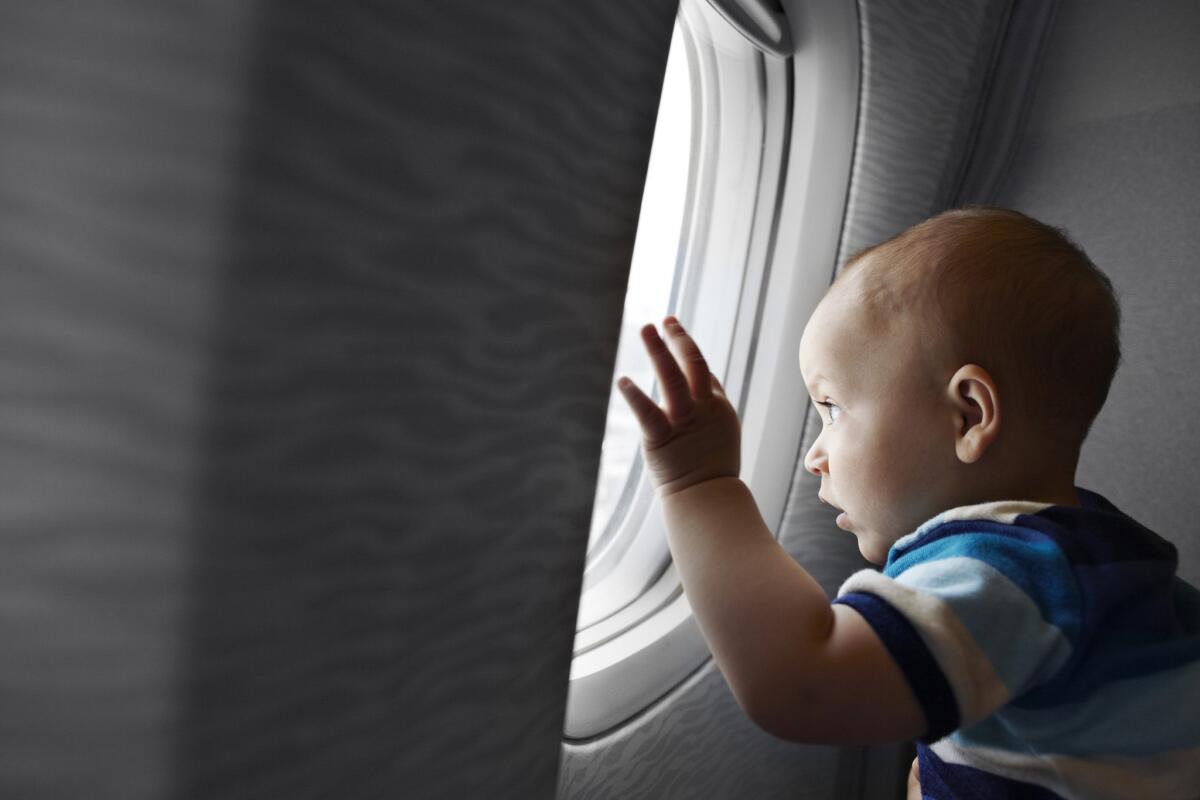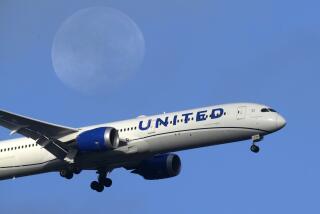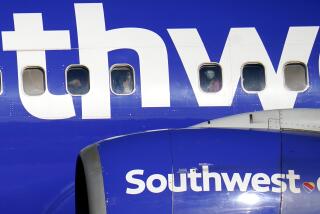Avoiding lap-child sticker shock on international flights

- Share via
While planning a summer trip to Europe for her family, Tara Firenzi of Santa Cruz was thrilled that she would save some money using awards miles for tickets for herself, her husband and 5-year-old daughter Ruby. Ten-month-old Hazel would fly as a lap child.
“I added the baby to the reservation during the booking process so there would be no ticketing issue later,” Firenzi said of their flights from San Francisco to Oslo by way of London.
But Firenzi was in for some sticker shock. “I was surprised to see that I would have to pay about $500 in airfare and taxes to bring Hazel,” she said. “It turns out the baby is going to be the most expensive of all of us traveling to Europe, even though she won’t even have her own seat.”
Most airlines define a lap child or infant as a child younger than 2 at the time of travel who will not be occupying his or her own seat. American carriers allow an adult on paid or award tickets to take one lap child without having to purchase airfare for the child if traveling within the U.S., Canada or Mexico (though they probably will pay taxes on some tickets).
The rules for international travel, however, are more complicated and create extra expense.
“Internationally, lap infant tickets will usually cost 10% of an adult fare,” said Summer Hull, founder of the family award travel blog Mommy Points (mommypoints.boardingarea.com).
That might not sound like much, but the language airlines use to define that adult fare can be murky.
American Airlines, for example, states its lap-infant ticketing policy this way: “For transatlantic/transpacific travel or travel to/from Latin America, children under 2 years of age are required to have a ticket in their name for 10% of the applicable adult fare for the International portion.”
Here’s the catch: The “applicable” fare mentioned is usually for an unrestricted or refundable fare class that can be much more expensive than the restricted, nonrefundable tickets most consumers purchase.
There is one more important condition: Adults taking a lap child must purchase the child’s ticket in the same cabin class in which the adult is traveling.
“That can be hundreds or even thousands of dollars if you fly in a premium cabin,” Hull said.
That is precisely what happened to Brian Werner of Telluride, Colo., when he booked an award trip to Istanbul last year for himself, his wife and infant son Levi.
Because Werner and his wife were flying business class, he was quoted a fare of $1,200 for the baby just for the return part of the itinerary. A friendly check-in agent helped him, he said, reducing that amount significantly. But, he added, “I wish airlines would have some consistent, clear rules about lap child fees, and charge reasonable amounts rather than basing them on 10% of the adult fare.”
What are parents to do, and how can they save money, short of leaving their baby at home? On paid tickets, parents do not have much choice. With award tickets, though, Hull said it means choosing the right mileage program.
“There are exceptions to the 10% fare if you are traveling on an award ticket,” she said. “Air Canada charges a flat fee in either Canadian dollars or award miles for a lap infant if the parent is traveling on an award ticket. Economy class will cost $50 [Canadian] or 5,000 miles, and business class will cost $100 [Canadian] or 10,000 miles.”
One of Hull’s other top programs for award travel with infants is British Airways, because, she said, the airline “charges you miles rather than dollars on award tickets at a rate of just 10% of the miles required for an adult award ticket, both on BA and its partner airlines.”
Hull also has one last piece of advice for fellow traveling parents. “Once the child is mobile (around 9 months or so),” she says, “flying with them as a lap child can be very challenging for everyone, and it might be a better investment to use miles to reserve … their own seat rather than paying 10% of the going fare.”
More to Read
Sign up for The Wild
We’ll help you find the best places to hike, bike and run, as well as the perfect silent spots for meditation and yoga.
You may occasionally receive promotional content from the Los Angeles Times.






